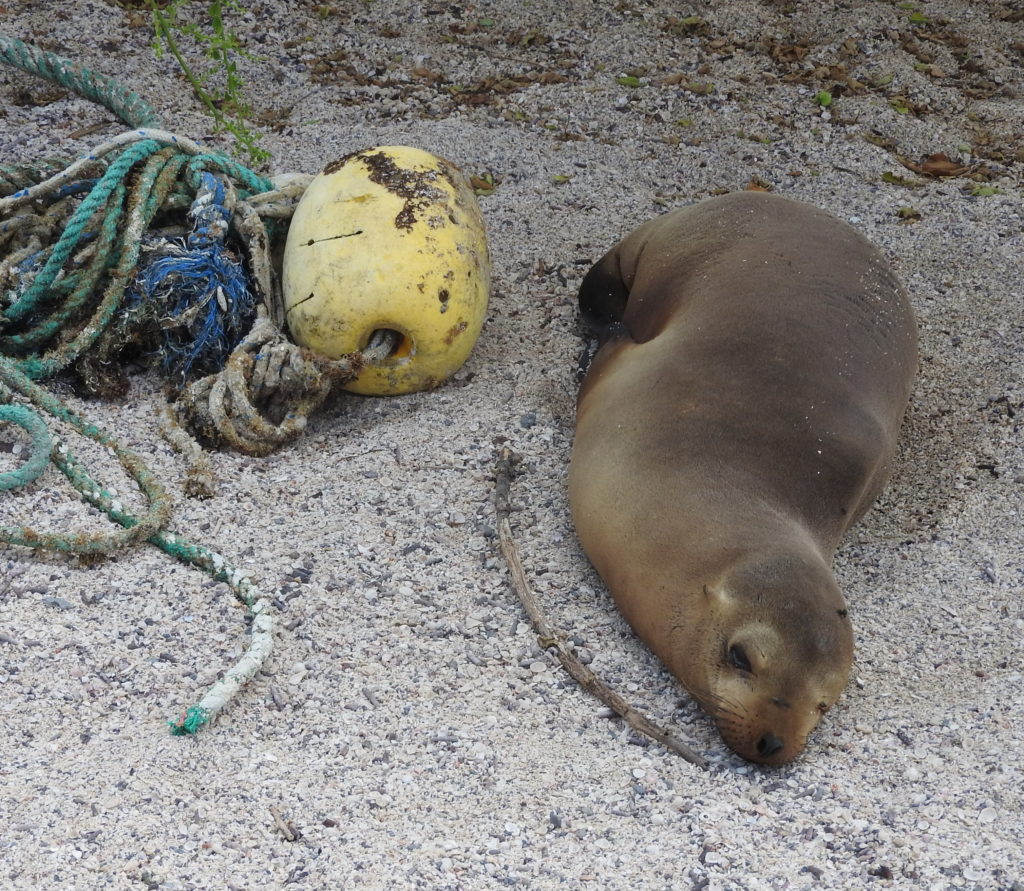Frigatebird hill
One of the places that you can visit on your own in San Cristóbal is frigatebill hill. There is a loop trail on the edge of town taking in a beach, a lighthouse, an interpretation centre, and leading up to a viewpoint overlooking some cliffs. Frigatebirds like to hang out in this area – so it’s called frigatebird hill.
It’s quite a short loop, and so not being to able to resist the lure of some frigatebirds, we headed off to take a look the very first afternoon that we arrived in the Galapagos. There is also an extension to the loop which goes to a beach called Playa Baquerizo – so we went back to frigatebird hill again later in the week, so that we could also walk the trail to this beach – which takes quite a bit longer.
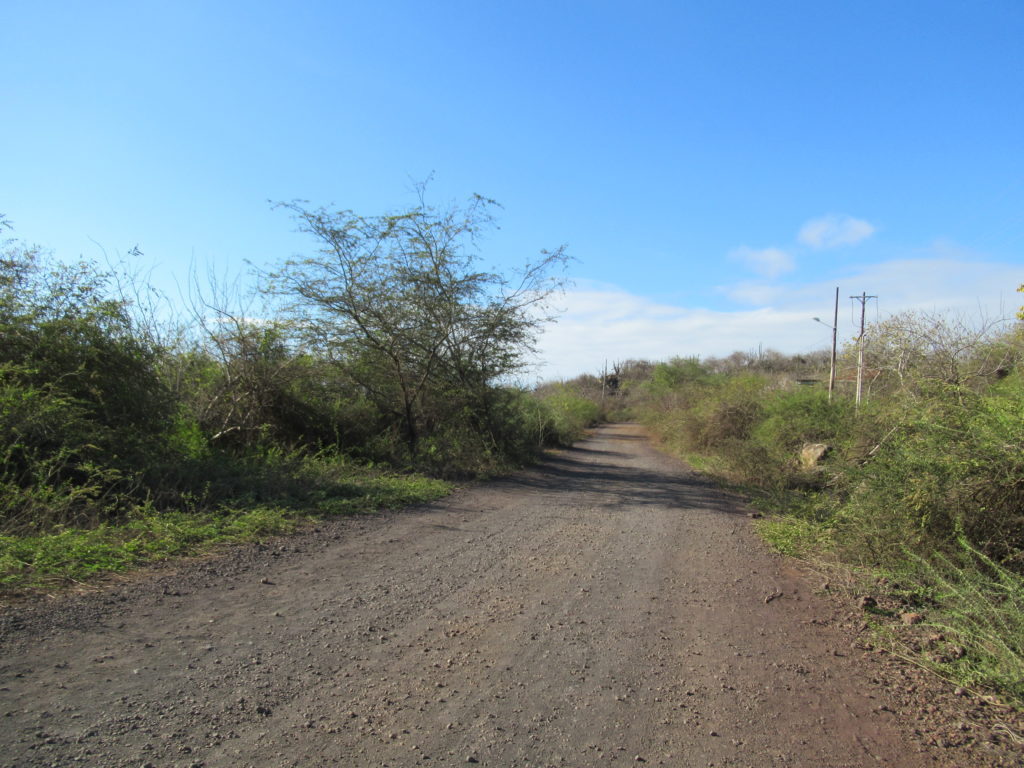
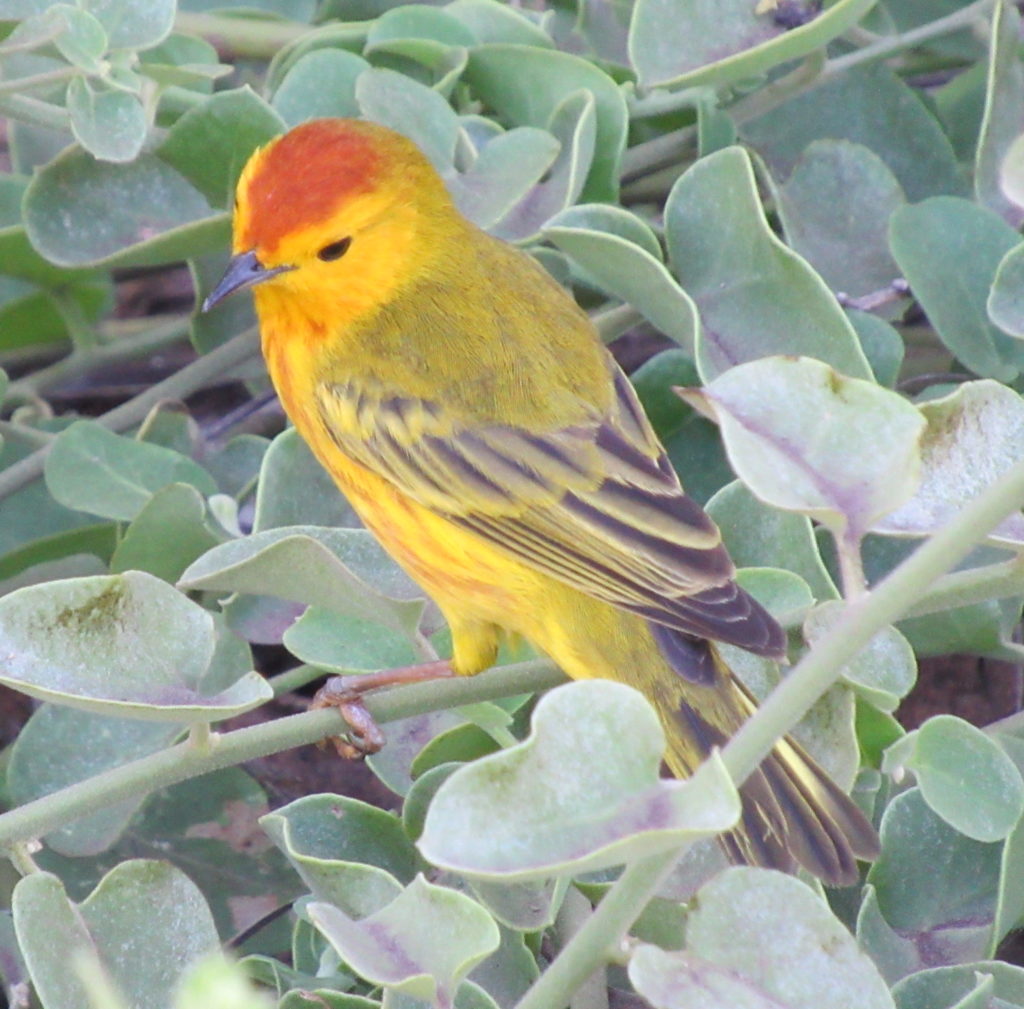
Because they were created by volcanoes, the islands of Galapagos are covered in solidified lava. Most of the time when you are walking outside of the town or beaches, then you are walking on volcanic dusty sand interspersed with large chunks of old black lava. Usually there is some kind of stone path to help you along though (but not always!).
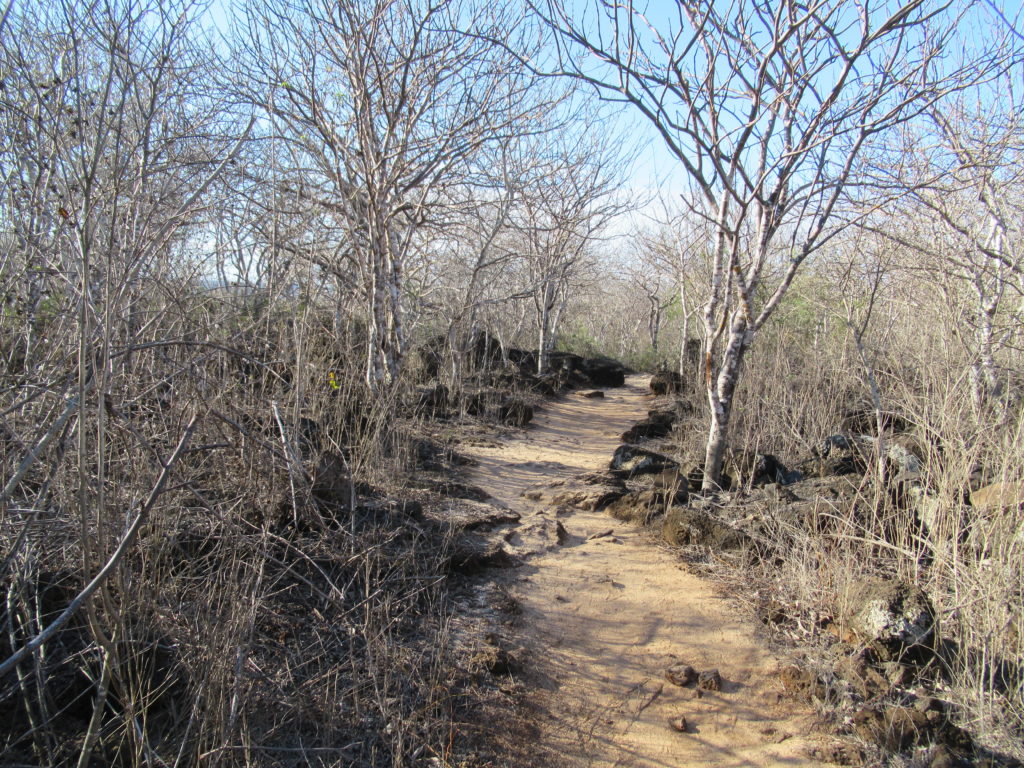
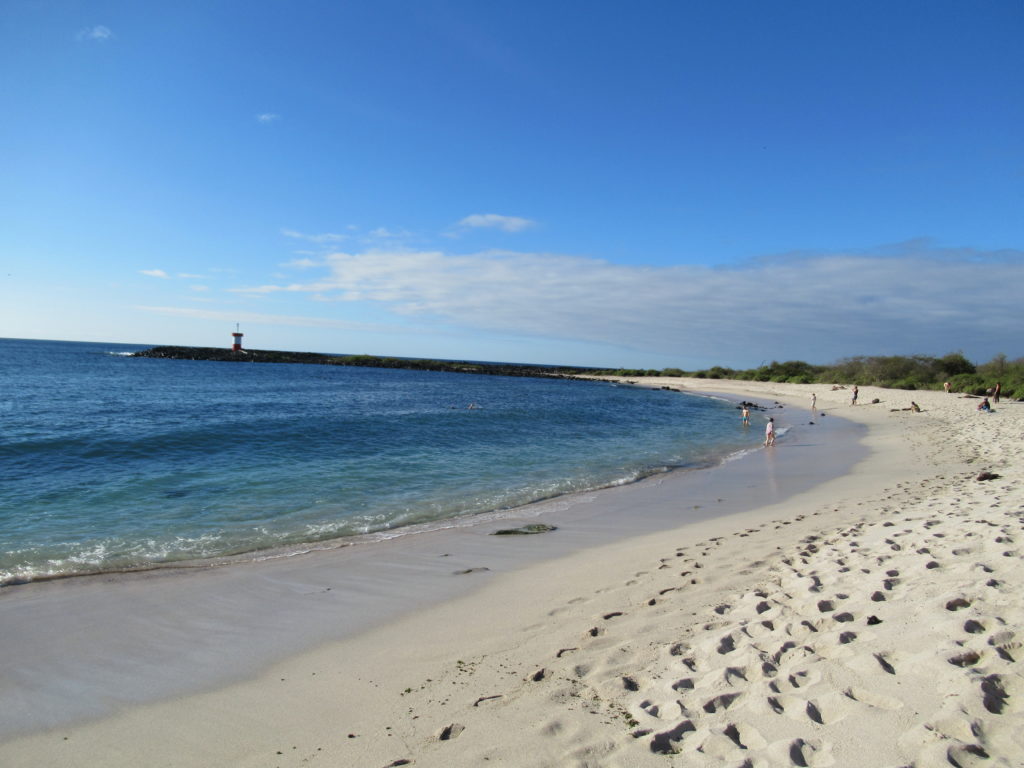

Just as we reached the end of the beach, we saw our first frigatebird! 🙂
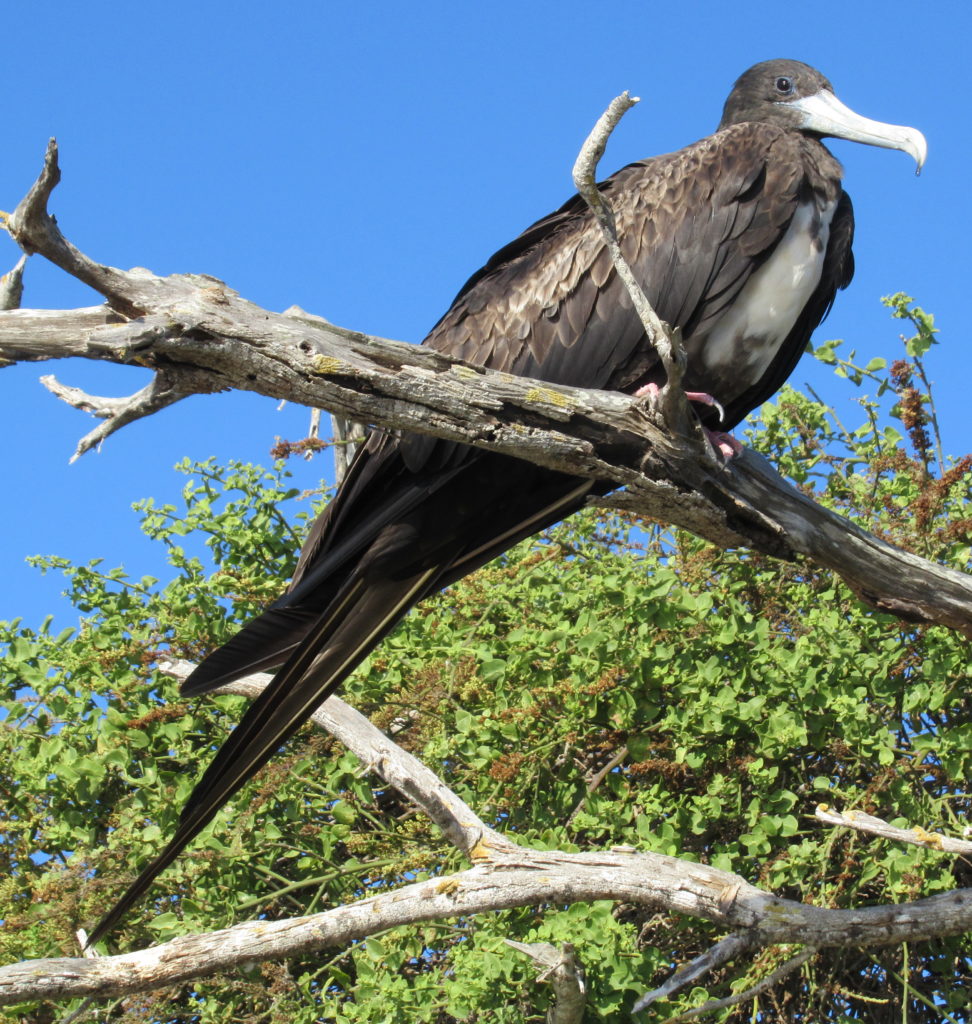
There are two kinds of frigatebirds in Galapagos – the magnificent frigatebird, and the great frigatebird. Yes, the names are pretty similar – and actually so are the frigatebirds! After a short study session on the internet, we learned the differences between the two species, so we could try and tell them apart. It was still pretty hard thought!
In summary – the male magnificent frigatebirds have a ‘purple sheen’ to their black feathers, whereas the male great frigatebirds have a ‘green sheen’ to their black feathers, and the female magnificent frigatebirds have a blue eye ring, whereas the female great frigatebirds have a red eye ring. Got it?
Well the eye rings were easy enough, but the ‘sheen’ on the feathers was not always very visible!

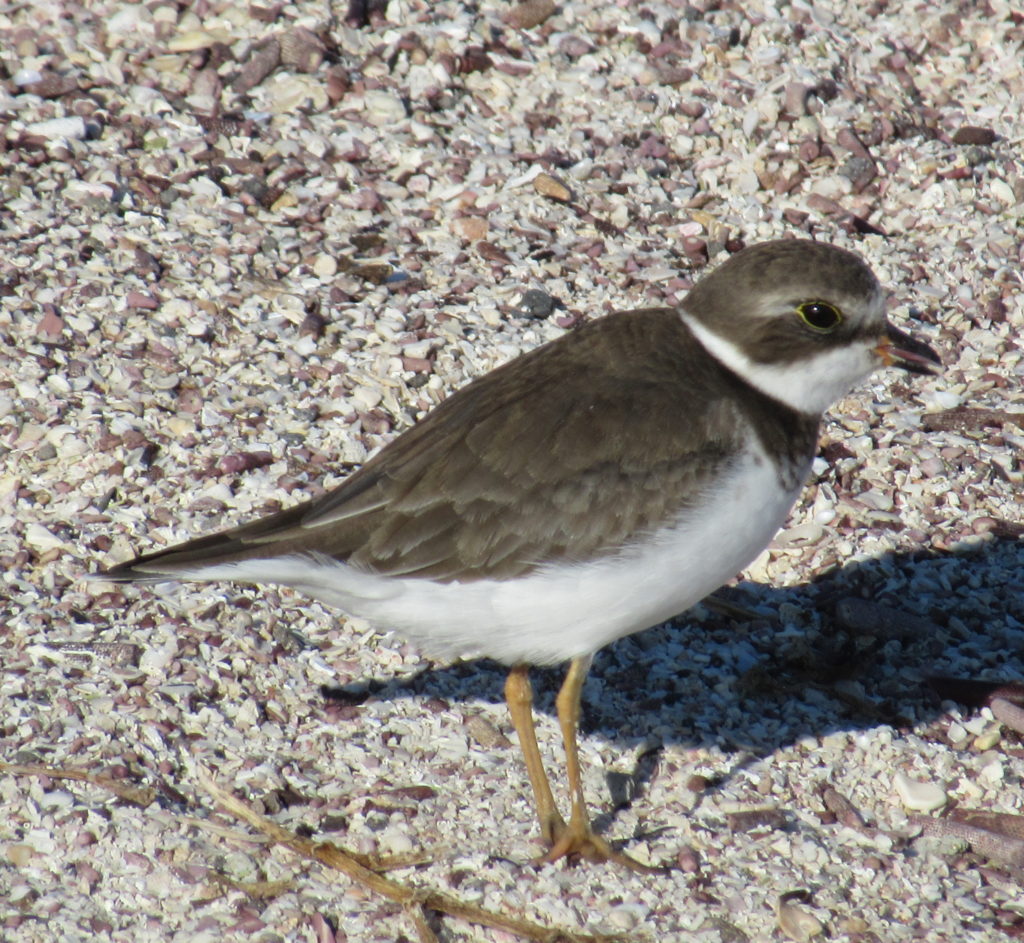
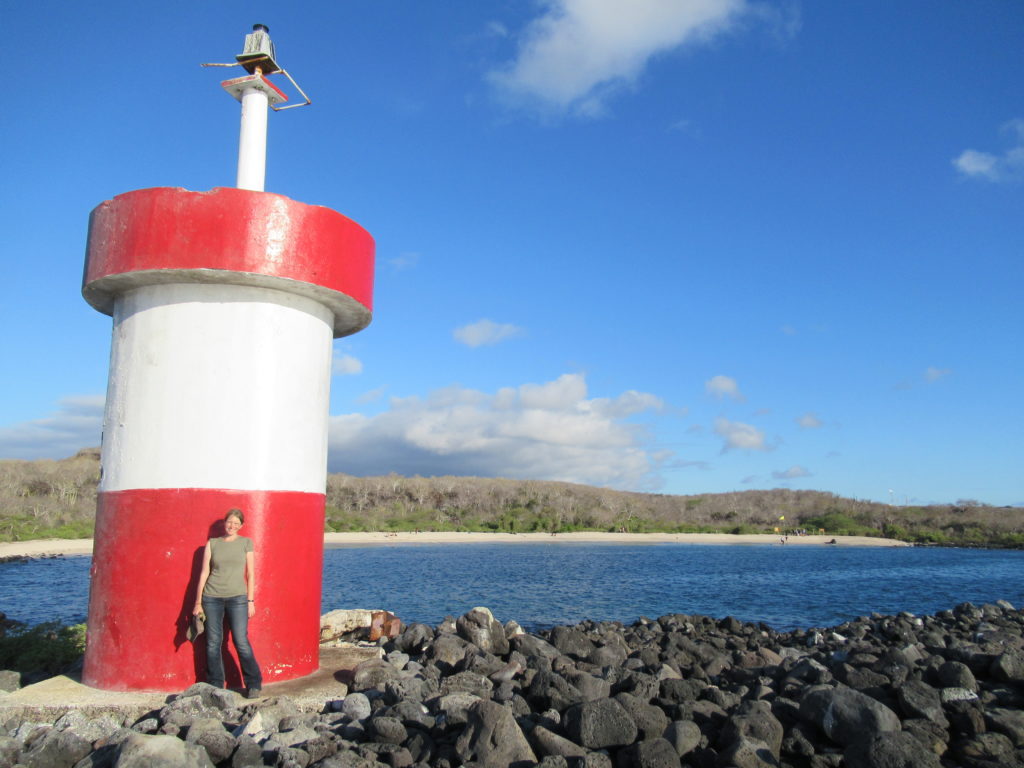

We had seen a couple of frigatebirds in the beach area, but most of the frigatebird action was at the top of frigatebird hill.
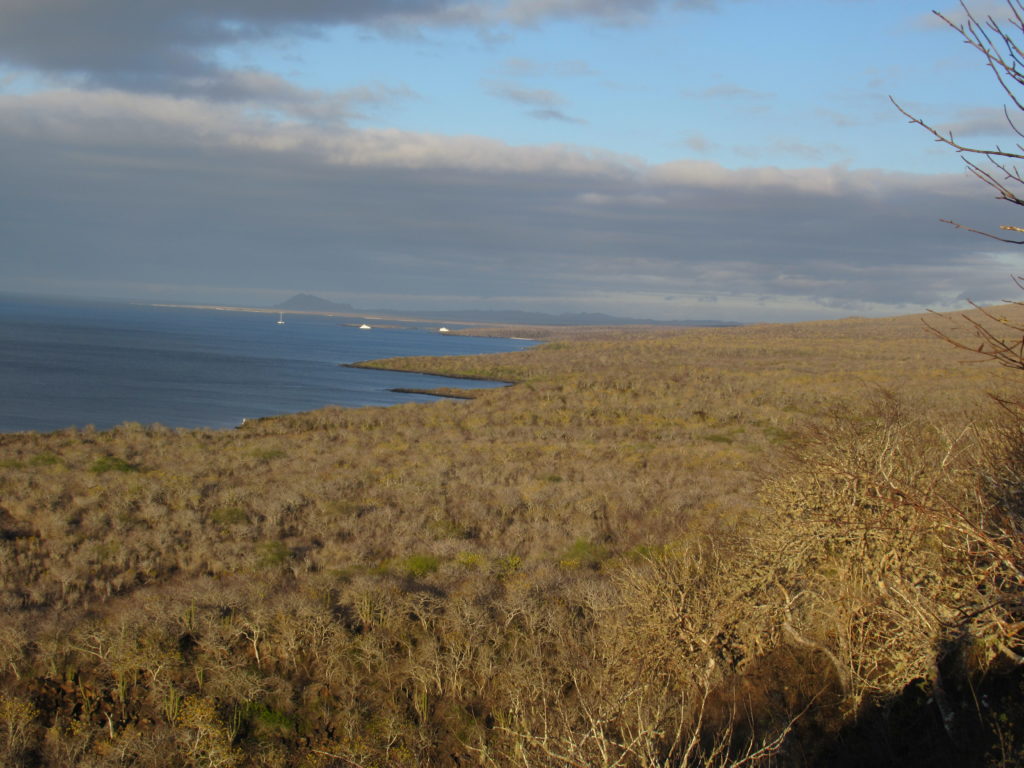
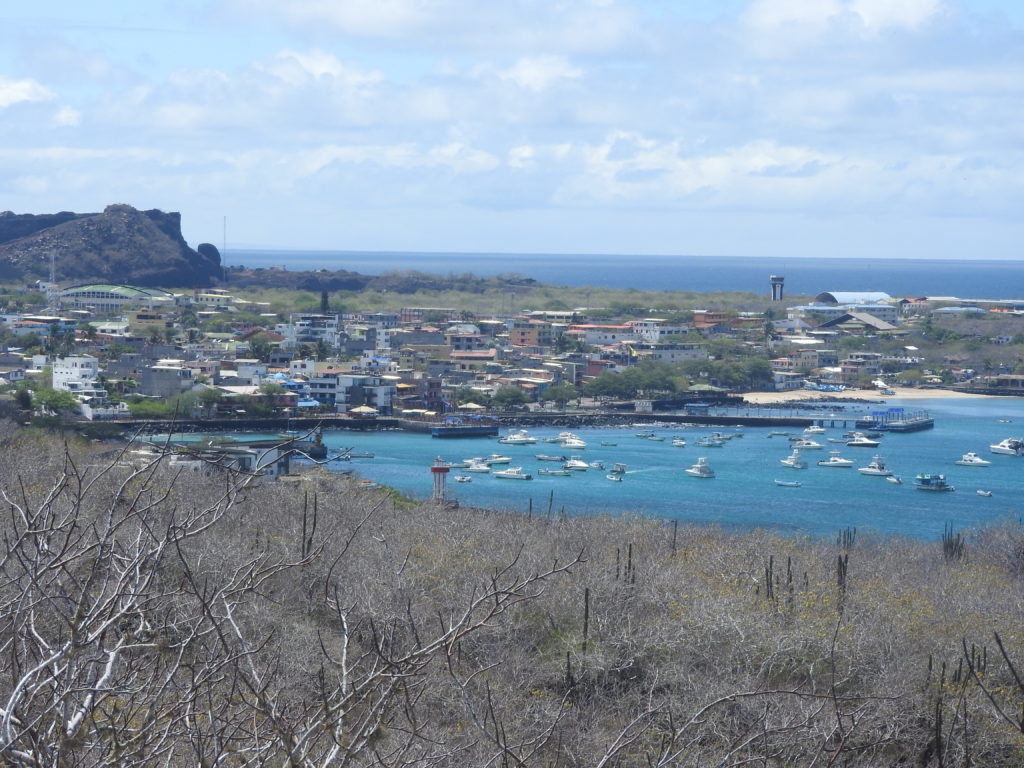
It turns out that frigatebirds are not very nice birds – they are what is known as kleptoparasites – doesn’t sound good does it? It means that they attack other birds and steal their food.Yep, they don’t bother hunting for their own fish, they wait until some other bird has caught the fish, and then they harass and attack that bird into dropping it or regurgitating it – so they can eat it themselves. We saw frigatebirds trying to steal fish from boobies quite a few times – they are pretty mean…
Another interesting thing about frigatebirds is that they don’t produce very much ‘oil’ on their feathers like other seabirds do. This means that if they land on the water, then their feathers become waterlogged and they can’t take off again. This is obviously a disaster for the frigatebird?! So, they simply don’t land on the water – which is very unusual for a seabird! Because of this they are AMAZING flyers – they can fly for TWO MONTHS without landing! (they can sleep while they are in the air!). They can also fly at heights of over 4000m – where it is FREEZING.
And finally, perhaps the most famous thing about frigatebirds is their big, red, inflatable ‘gular’ sack. This is a bright red pouch on their neck, that they inflate with air to a huge size in order to attract females to breed. Most photos of frigatebirds that you see are showing them with this huge red sack inflated. Frigatebird hill is not a breeding area though – so you can’t see any bright red inflated sacks on the frigatebirds here – but you can see some dull-red uninflated sacks! 🙂 Even when they are not breeding they are quite impressive, and we hoped to visit a breeding colony later on one of the other islands.
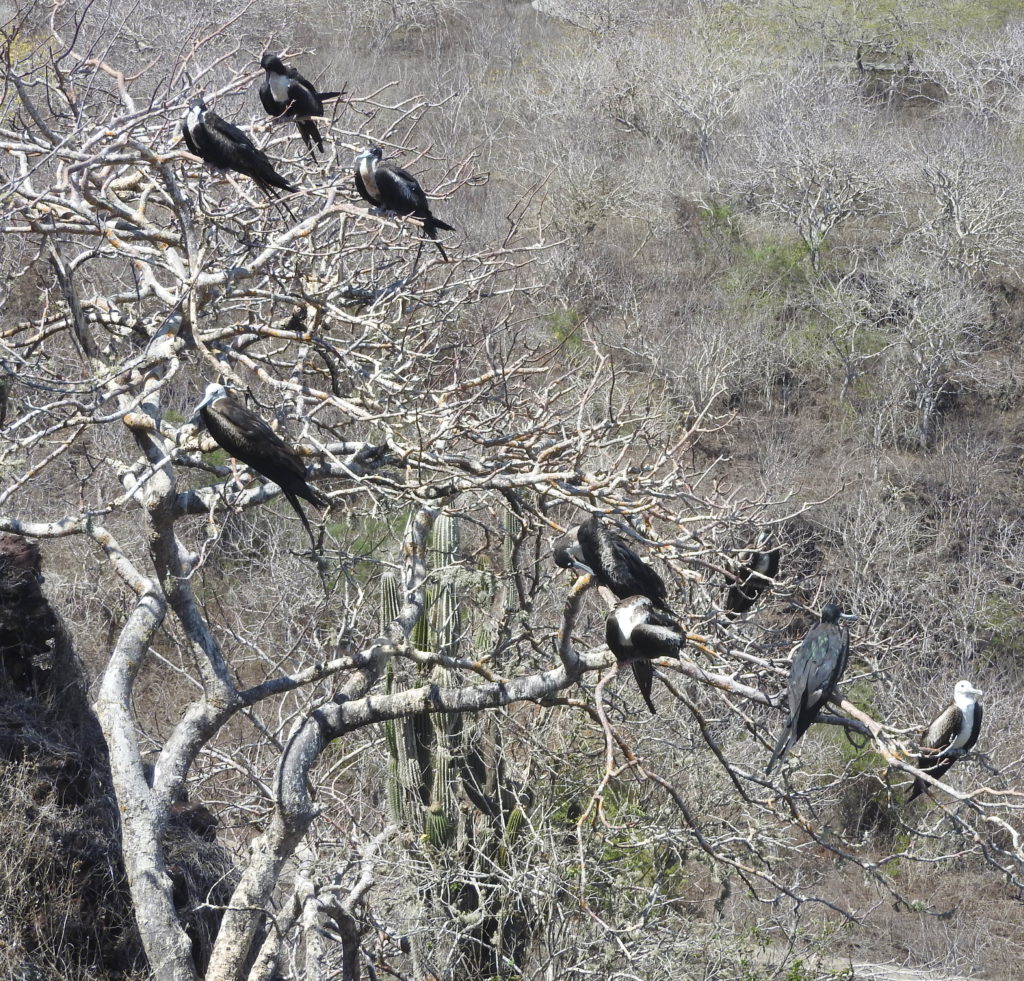

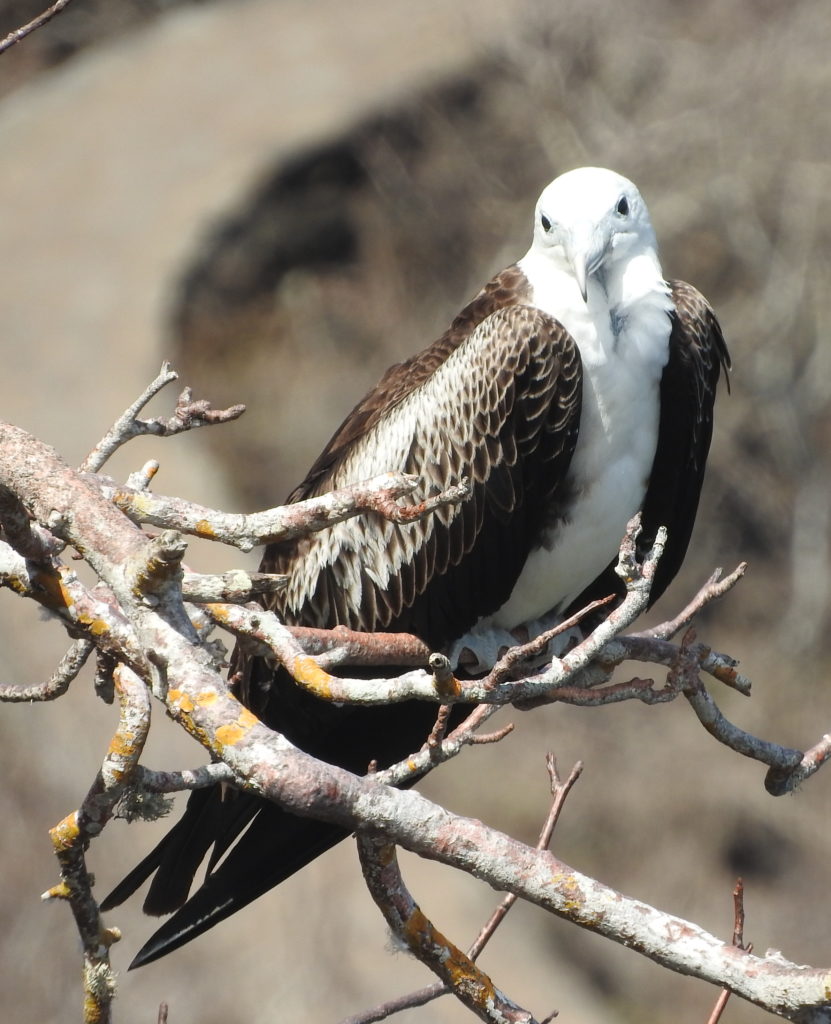
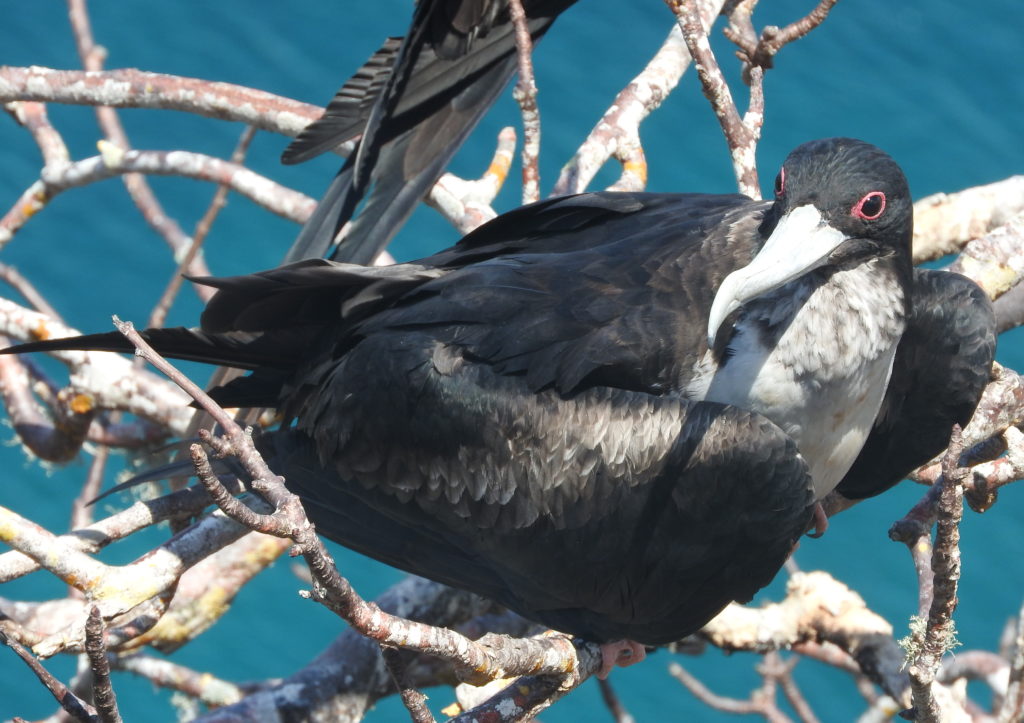
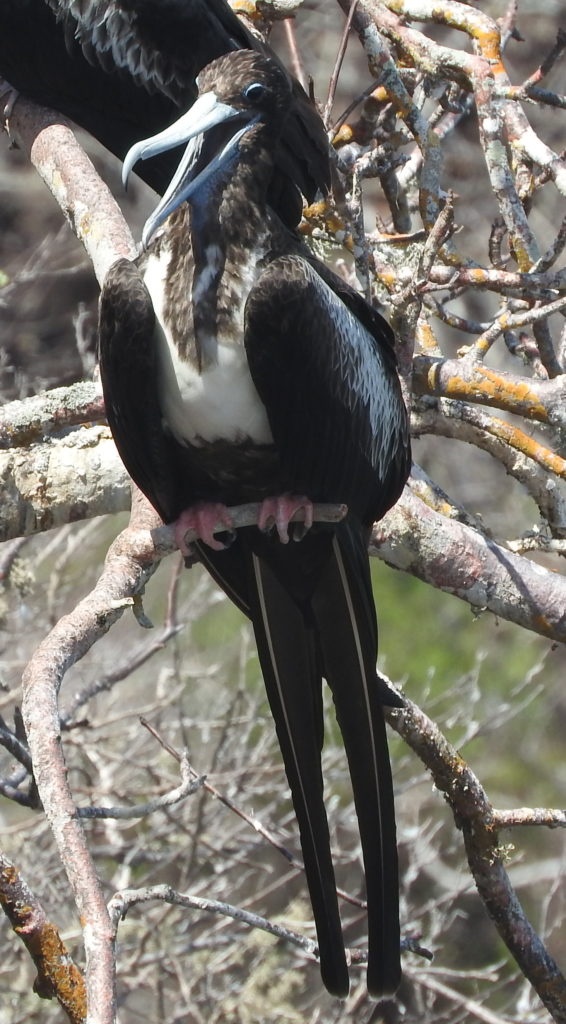
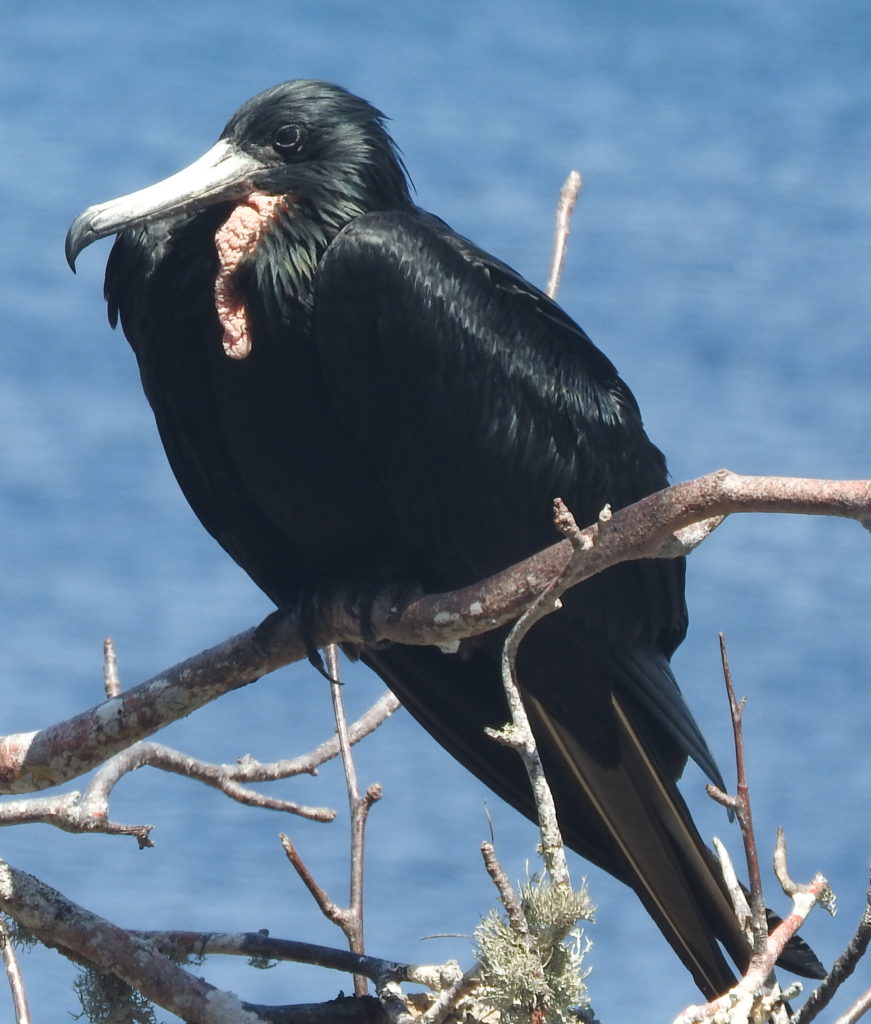
From the top of frigatebird hill, the trail to Baquerizo beach starts. It’s a bit of a scramble as the trail is not paved. It goes downhill to a stretch of sand which looks like a beach, but is not ‘the beach’ – and then continues along the coast as a scramble over lava, passing a few good coastline views until finally arriving at Playa Baquerizo.
Playa Baquerizo didn’t look a LOT different from all the other bits of sand that we passed on the way! But it was a very tranquil spot – probably because most people can’t be bothered to scramble over lava for an hour or so to get there!
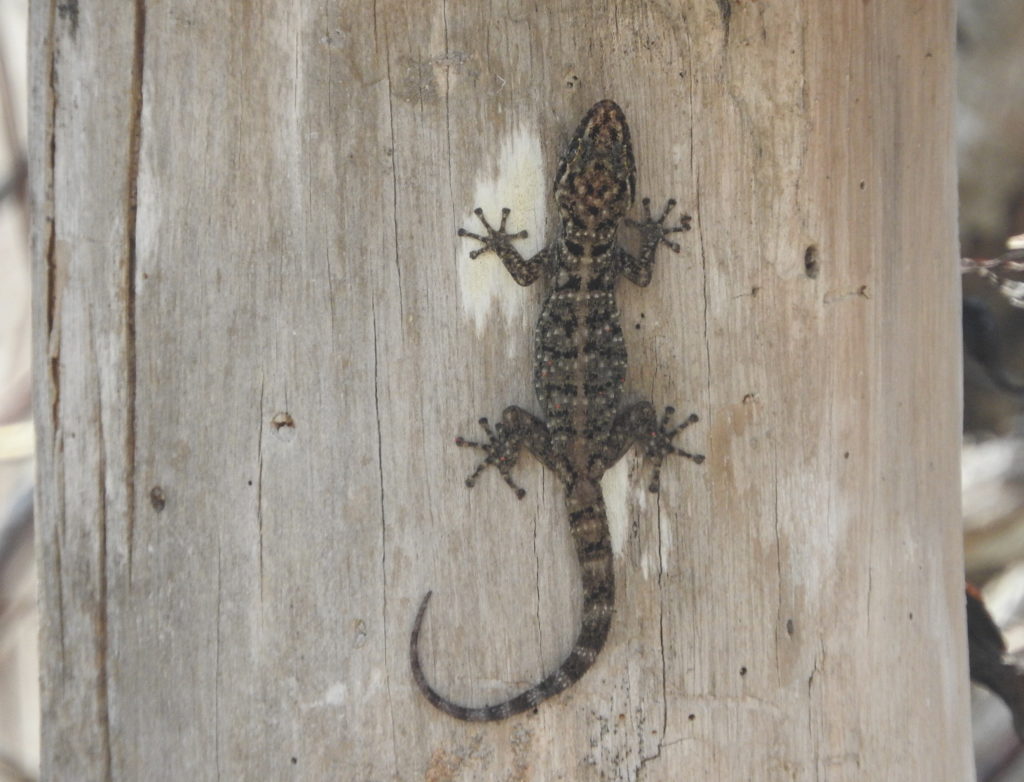
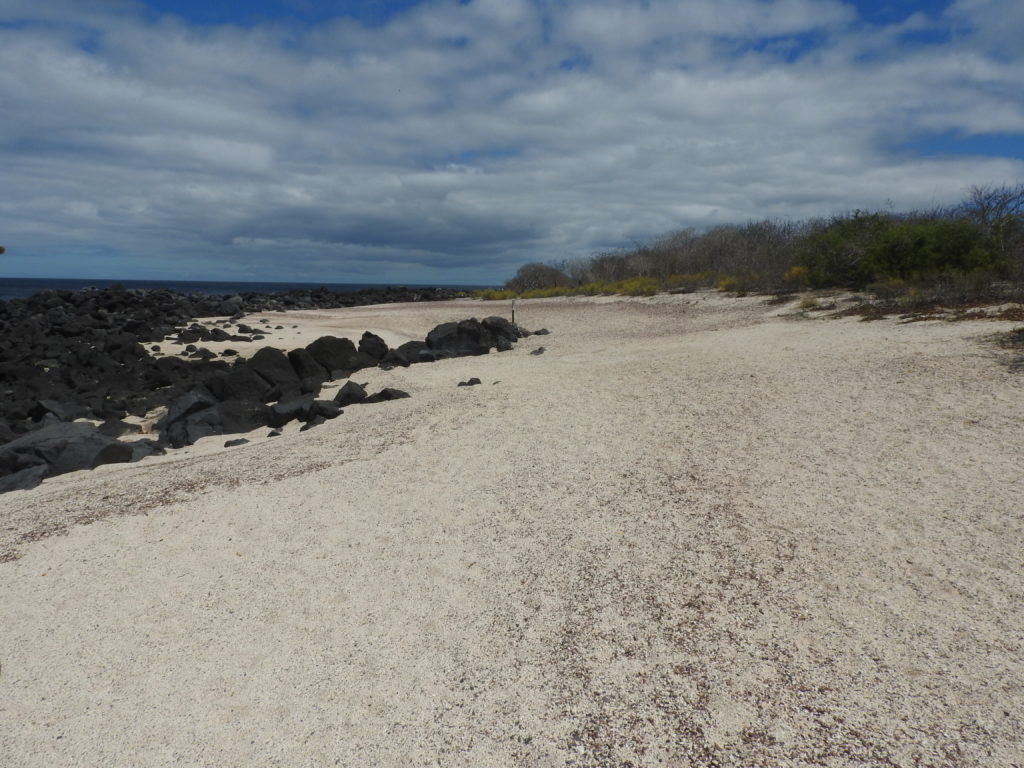
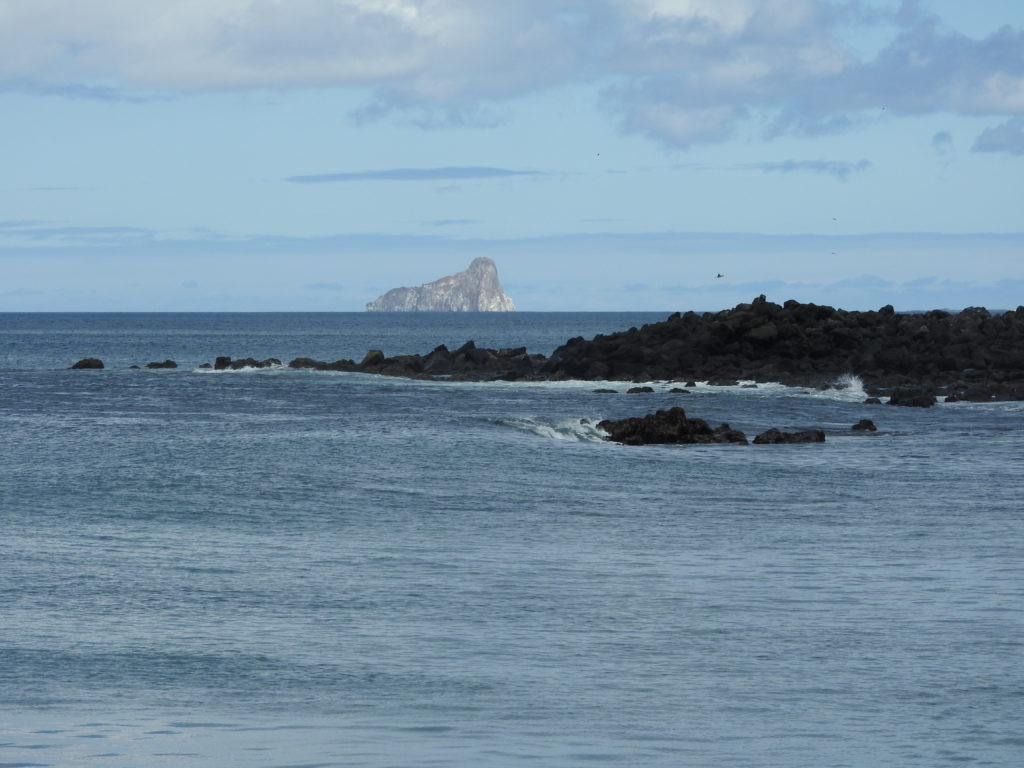
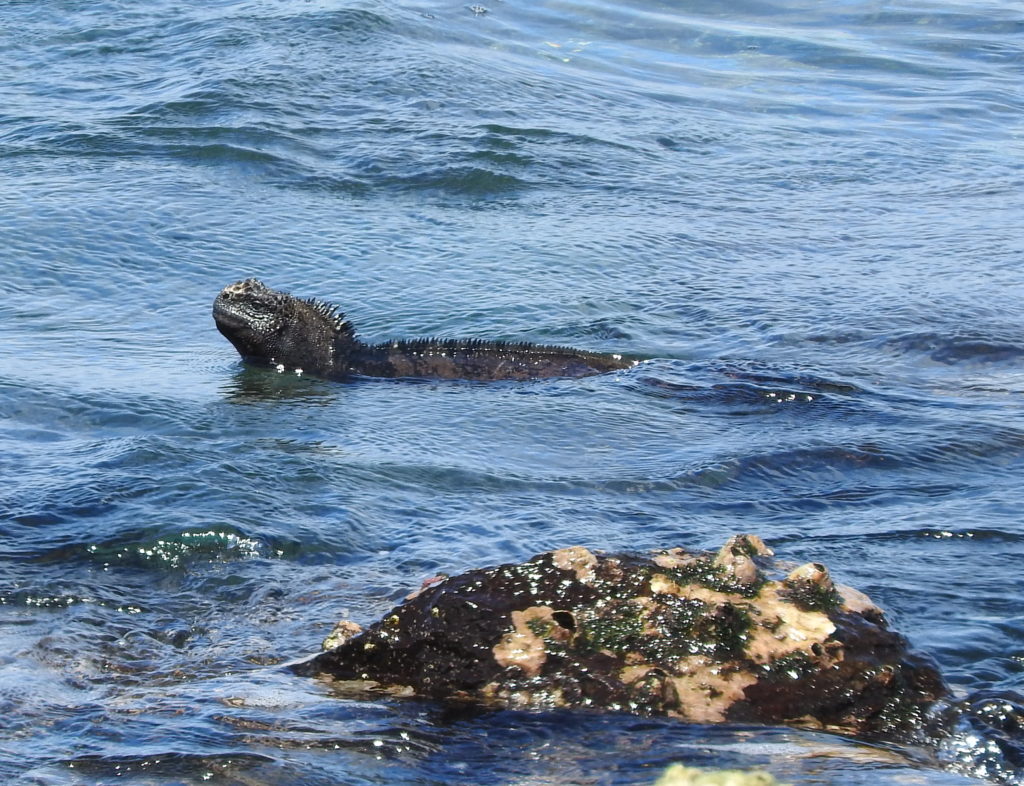

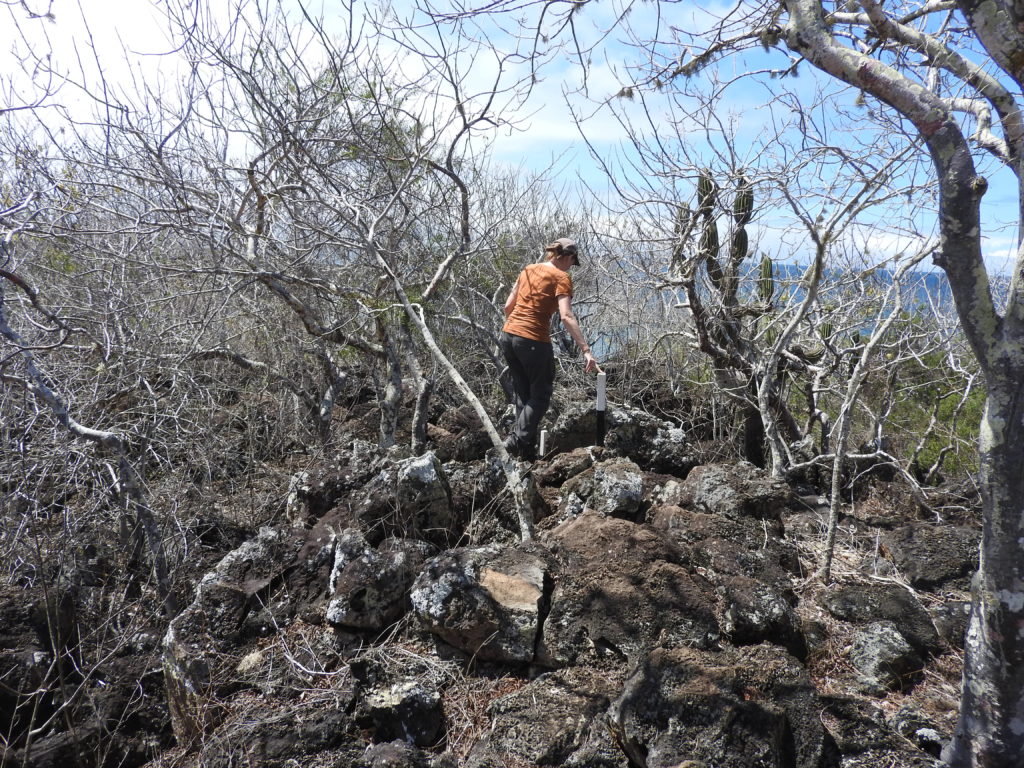
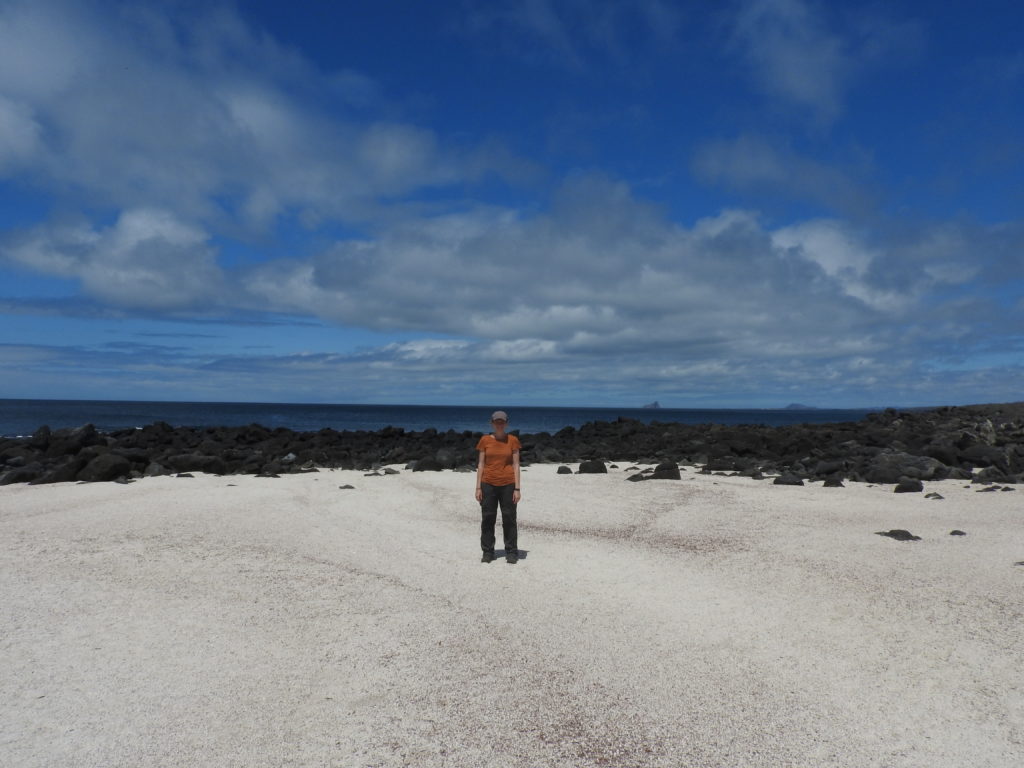
We spent a bit of time at the beach looking at the marine iguanas and sea lions, before heading back the way we came. It was a nice beach – but we weren’t sure if it was worth the walk – seeing as it looked like lots of the other beaches and it didn’t have any extra wildlife (that we could find anyway! 🙂 )
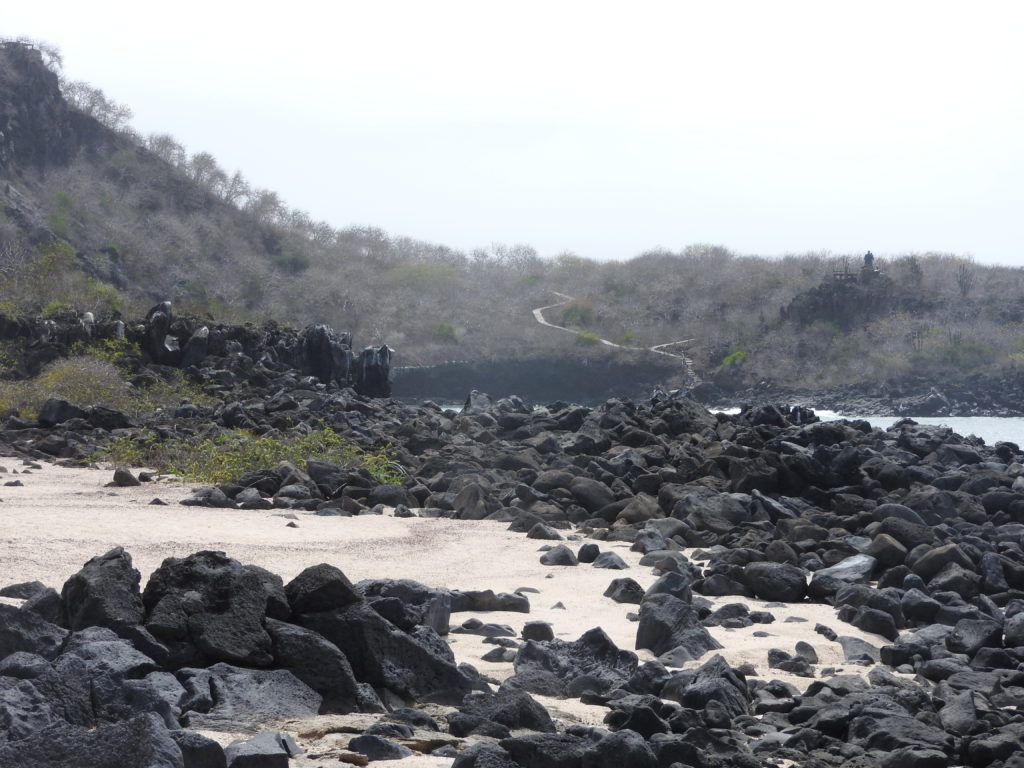
On the way back to town we went via a different section of the loop trail – and discovered a few more things…
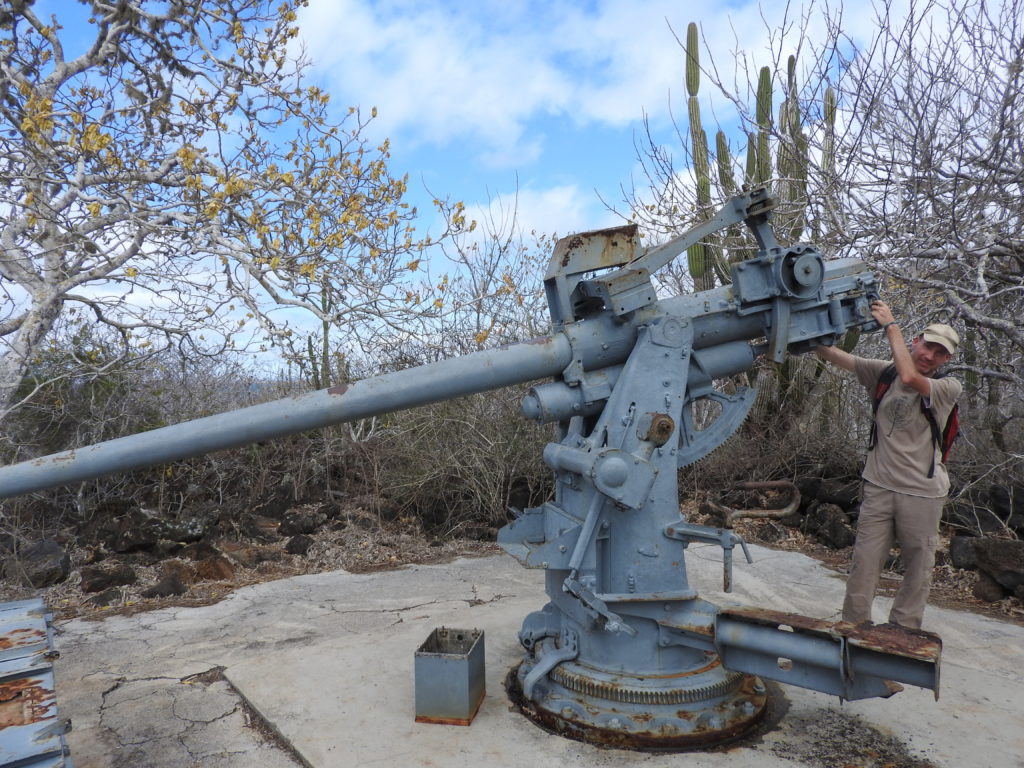
No day in San Cristóbal passes without seeing at least 20 sea lions – so I’ll leave you with a picture of one that we found at the end of the trail back…
